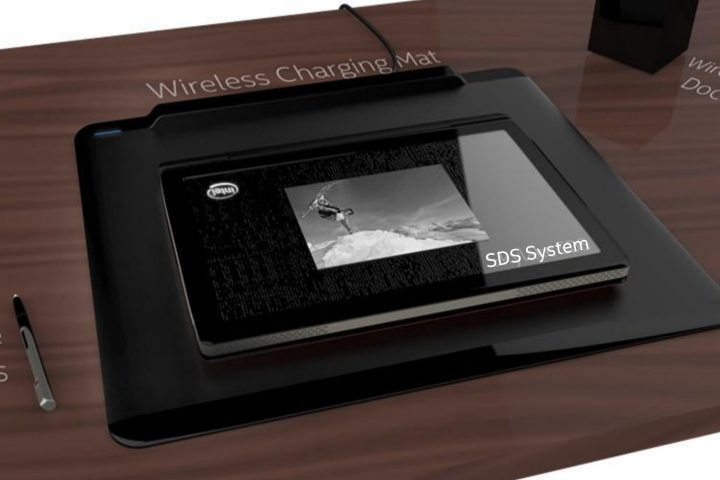
You can see all of the details of what Intel thinks a 2-in-1 should be in the link above, but essentially, it includes all of the newest technology, such as WiGig wireless docking support, Intel Skylake processors, USB Type-C connectors, wireless charging, and more.
Intel’s design favors a removable keyboard in line with the Surface over the folding options many hardware manufacturers are going with today.
One part of Intel’s idea that stands out is wireless charging, something we are seeing more commonly in smartphones. Intel envisions a mat on which users would place to device when they want to charge it. This could be a little quicker than having to plug it in, but of course, it’s not a completely wire-free existence, as the mat does need to be plugged in.
The design looks to favor a Thunderbolt port with a USB Type-C connector, though the design also shows a standard USB 3.0 port for connecting more common devices like mice, thumb drives, and so on. Type-C would be used for connecting external displays, external GPUs, and other things along that line. There’s also Intel’s WiDi technology for connecting to wireless displays.
Some of the other features shown in the design include active stylus support, a fingerprint scanner, 4K cameras, extra batteries, and so on.
So far, most of the things Intel is talking about don’t sound revolutionary, but rather are just smart design choices. Where things get interesting is in the proposed 1,024 x 768 E-Ink display on the back of the screen. This could be used for showing messages, serving ads, or even letting the user read a book with the tablet in a low-power state, since the main, high-resolution screen would be off.
This 2-in-1 is best thought of like a concept car. It’s Intel’s idea of what would make for a solid device, rather than something it’s announcing for sale. While Intel does produce a few PCs, like the NUC kit computer, it has never sold a reference 2-in-1 or laptop design in the past and is unlikely to start now. Still, there are some solid idea here, and if they came to be, they would make for a well-received hybrid.
Editors' Recommendations
- Intel is oddly enthusiastic about AI replacing everyone’s jobs
- Intel’s new CPU feature boosted my performance by 26% — but it still needs work
- Intel’s next-gen GPU might be right around the corner
- Intel may have a monster new CPU coming soon
- Helldivers 2 PC performance: best settings, performance, crashing


